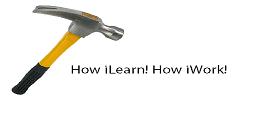Published on
How iLearn! How iWork! – Keeping Your Stars

Being the first of a weekly column to be published here, welcome to readers and followers. If you have been following my series “Why Life Long Learning”, Part 6 will appear this Friday and continue on Fridays. When I told a former client, who has remained a friend and colleague, of my new quest, she said, “It is a great opportunity for you to share your accumulated wisdom.” I wouldn’t go quite that far, but I will attempt to personalize my stories to the topic for which I have had a passion nearly all my life – learning and applying what I have learned in some meaningful way.
“You’re hired” or “You’re fired!” are the two words that can have a mighty ripple effect through any organization. Having been the provider of the first and recipient of the second, I can attest to the happiness, joy, reflection, anger, fear, depression, and other emotions these two words initiate. If you have spoken these two words to someone else or had “You’re fired!” spoken to you, you know exactly what I mean.
There is a movement underway attempting to minimize both statements, although I’m positive Donald Trump will continue stating harshly, “You’re fired!” on his reality show. What is this “movement”? Talent Management. Talent is becoming a valuable asset to most organizations and scarcer to find and retain. The size and mix of the global talent pool is changing. If you don’t now know that it will remain a central issue to business growth and sustainability, you must be living on another planet or don’t care. Either means your enterprise, the place where you work, meaning your job, may go the way of the CRT, 45 and 78 rpm records, and 8 track cassette tapes.
“Talent “as applied to the work environment, meaning those with accomplished skills and competencies already learned and able to demonstrate they have them. If you are in the job hunt, as more 2 million of our citizens are, you likely have noticed extensive details offered in company web site job postings. One I read last week was six, yes six, pages long. The posting listed position purpose, major accountability in 13 performance areas and 15 performance indicators, functional knowledge required, business expertise (which alone would have disqualified 50% of those searching), leadership/people management skills, problem solving, nature of job impact on the organization, areas of impact, interpersonal skills required, and lastly, qualifications and experience required. I got short of breath just reading that posting aloud and wondered are there really people out there who can meet these requirements and why would the company be so specific?
The answers are yes there are still some qualified candidates, but not many; and yes the company is seeking an exact match. In fact, they are willing to out bid other companies wanting this candidate for the perfect match or purposefully attempt to attract them away from another company. Back on the farm, my grandfather used to say, “When the well runs dry, it will cost a whole lot more to drill a new one.” He’d continue by looking up at the sky while saying “Com’ on rain we planted the best seeds.” Everyone wants the best “seed” (talent) and will need plenty of rain (company attraction) to win the war for talent.
These circumstances are expanding daily as thousands of baby boomers retire each day. As the headcount of human capital known as knowledge workers or computational thinkers shrinks, fewer numbers of multi-generational and multi-cultural replacements with comparable skills are available. As a result price bidding for talent will continue and precede actually making a company flatter, engaged, collaborative and learning supportive. The generally accepted and applied learning framework is known as the 70-20-10 – 70% learning by doing actual work, 20% on-the-job/training/mentoring, 10% formal training. Trouble is there aren’t enough people, Generation X cohort, who have had entry level business skills development, and are ready for the computational thinking roles. This is because many of what once were entry level jobs where basic business skills were mostly learned are no longer. Therefore, the “movement” is how to repurpose your business model to gain more efficiencies, better manage employees/contractors/vendors/suppliers for synergy with company strategy to improve customer satisfaction, improve brand trust, and organized career paths to be among those most attractive companies in your sector making your recruiting and retention of the best talent in the market easier.
The end result should be more of the joyful “You’re Hired” and fewer “You’re Fired” speak in the workplace.
 NEXT WEEK IN How iLearn! How iWork!: Why computational thinking is a new requirement in learning.
NEXT WEEK IN How iLearn! How iWork!: Why computational thinking is a new requirement in learning.
Editor’s note: Part 6 of Mike Hammer’s Series, “Why Lifelong Learning?”, will appear this Friday, April 6 and continue regularly on Fridays.
Author Perspective: Business



